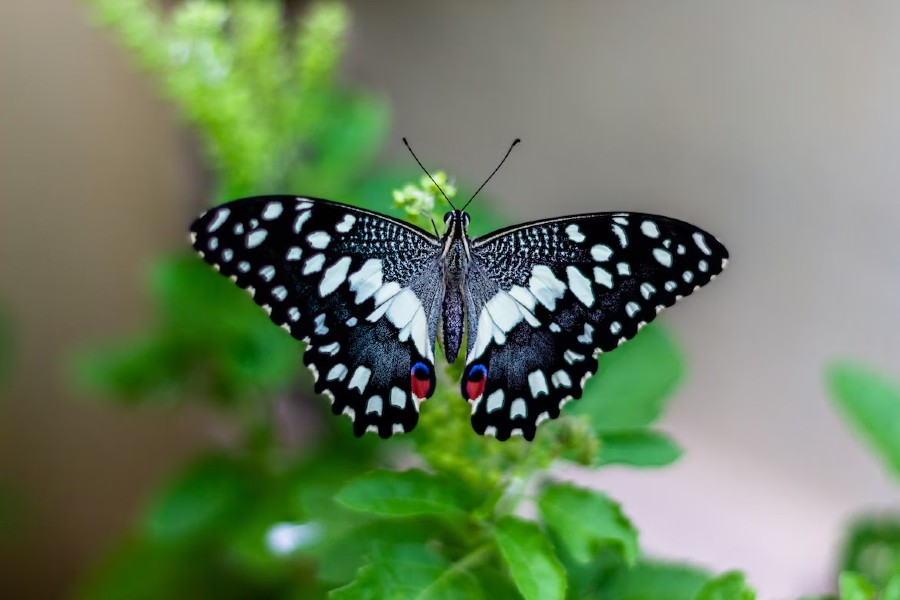
Throughout history, butterflies have fascinated humanity with their captivating beauty and awe-inspiring metamorphosis.
The profound transformation from a lowly caterpillar to a resplendent butterfly has given rise to a wealth of symbolism in diverse cultures worldwide. Each culture has imbued these delicate creatures with unique meanings, attributing them to concepts such as beauty, spiritual growth, and profound transformation. In this comprehensive blog post, we delve into the rich tapestry of butterfly metamorphosis symbolism in various cultures, unveiling the depths of interpretation associated with these enchanting insects.
Christian Symbolism: Spiritual Transformation
In Christian art and symbolism, the butterfly holds significant meaning, representing spiritual transformation and the resurrection of Christ. The butterfly’s association with spiritual transformation stems from its profound metamorphosis. Just as the caterpillar undergoes a remarkable process of cocooning and emerging as a beautiful butterfly, Christians interpret this transformation as a metaphor for the human soul’s journey toward spiritual growth and rebirth. The butterfly’s emergence from its chrysalis symbolizes the hope of eternal life and the promise of resurrection.
The delicate wings of the butterfly, with their vibrant colors and intricate patterns, serve as a visual representation of the divine beauty that awaits believers in the afterlife. The butterfly meaning is also deeply intertwined with the concept of redemption. Its ability to soar and flutter freely through the air embodies the liberation and freedom experienced by those who have undergone a spiritual transformation. It is a symbol of liberation from earthly constraints and the embrace of a higher spiritual existence.
The imagery of the butterfly is often found in Christian artwork, adorning stained glass windows, paintings, and religious texts. These depictions aim to inspire and remind believers of the transformative power of faith and the possibility of a new beginning. The butterfly’s symbolism in Christianity emphasizes the notion of spiritual renewal and the potential for profound change in one’s life.
Ancient Greece: Soul and Immortality
In ancient Greek mythology, butterflies held a deep connection to the essence of the human soul. The word “psyche” in Greek encompasses both “soul” and “butterfly.” The myth of Eros and Psyche exemplifies this belief, recounting the story of Psyche, a mortal princess who, through trials and tribulations, attains immortality and ultimately transforms into a butterfly. This captivating tale intertwines the butterfly’s metamorphosis with the immortality and transcendence of the human spirit. Thus, the butterfly becomes a powerful symbol representing the eternal nature of the soul and the unending journey of the human experience.
Native American Cultures: Transformation and Renewal
Numerous Native American tribes hold butterflies in reverence, attributing to them the sacred power of transformation and renewal. Among the Hopi people, butterflies are believed to embody the spirits of departed ancestors. They are seen as agents of spiritual transformation, carrying the departed souls to their next phase of existence. The Navajo tribe associates butterflies with seasonal change and renewal, considering them heralds of spring and symbols of harmony with nature. The butterfly’s remarkable metamorphosis becomes a symbol of personal growth, embracing change, and the cyclic nature of life.
Chinese Culture: Love and Joy
In Chinese culture, butterflies occupy a special place as symbols of love and joy. The Chinese word for butterfly, “hu-tie,” is often associated with a young bride, representing beauty, grace, and marital bliss. The butterfly’s delicate and graceful presence in traditional Chinese art conveys its symbolism of love, relationships, and the transient nature of life. Just as the butterfly flutters freely, its flight becomes a metaphor for the pursuit of freedom and happiness within the human spirit.
Japanese Culture: Transience and Impermanence
In Japanese culture, butterflies are deeply intertwined with the concept of “mono no aware,” which encapsulates the bittersweet beauty of impermanence. Japanese philosophy recognizes that life is fleeting, and the butterfly’s ephemeral existence perfectly embodies this belief. Japanese art often depicts butterflies as transient beings, reminding viewers to cherish the present moment and appreciate the ever-changing nature of life. The butterfly’s ethereal beauty serves as a poignant reminder to find joy in the impermanence of all things.
Aztec Culture: Resurrection and Rebirth

Within Aztec mythology, the butterfly, known as “papalotl,” symbolizes resurrection and the eternal cycle of life. According to legend, the god of the sun, Huitzilopochtli, sacrificed himself and was reborn as a blue butterfly. This transformation from life to death and rebirth solidifies the butterfly’s association with the cyclical nature of existence. The Aztecs believed that deceased warriors transformed into butterflies, returning during the festival of the dead. The butterfly’s metamorphosis thus becomes a powerful metaphor for the eternal dance between life, death, and rebirth.
In addition to these specific cultures, butterfly symbolism permeates many other societies and religions. In various contexts, butterflies are seen as symbols of hope, change, and personal growth. The universal appeal of the butterfly’s metamorphosis lies in its ability to inspire individuals to embrace transformation, let go of the past, and emerge with newfound strength and beauty.
As we observe the remarkable metamorphosis of butterflies, we are invited to reflect on our own journeys of growth, renewal, and spiritual transformation. The butterfly’s graceful presence serves as a gentle reminder that beauty can emerge from the most unexpected places and that within every individual lies the potential for profound change and metamorphosis.
May the symbolism of the butterfly inspire us to embrace the transformative power within ourselves and to appreciate the intricate beauty of life’s ever-changing tapestry.
Become a Harlem Insider!
By submitting this form, you are consenting to receive marketing emails from: Harlem World Magazine, 2521 1/2 west 42nd street, Los Angeles, CA, 90008, https://www.harlemworldmagazine.com. You can revoke your consent to receive emails at any time by using the SafeUnsubscribe® link, found at the bottom of every email. Emails are serviced by Constant Contact







